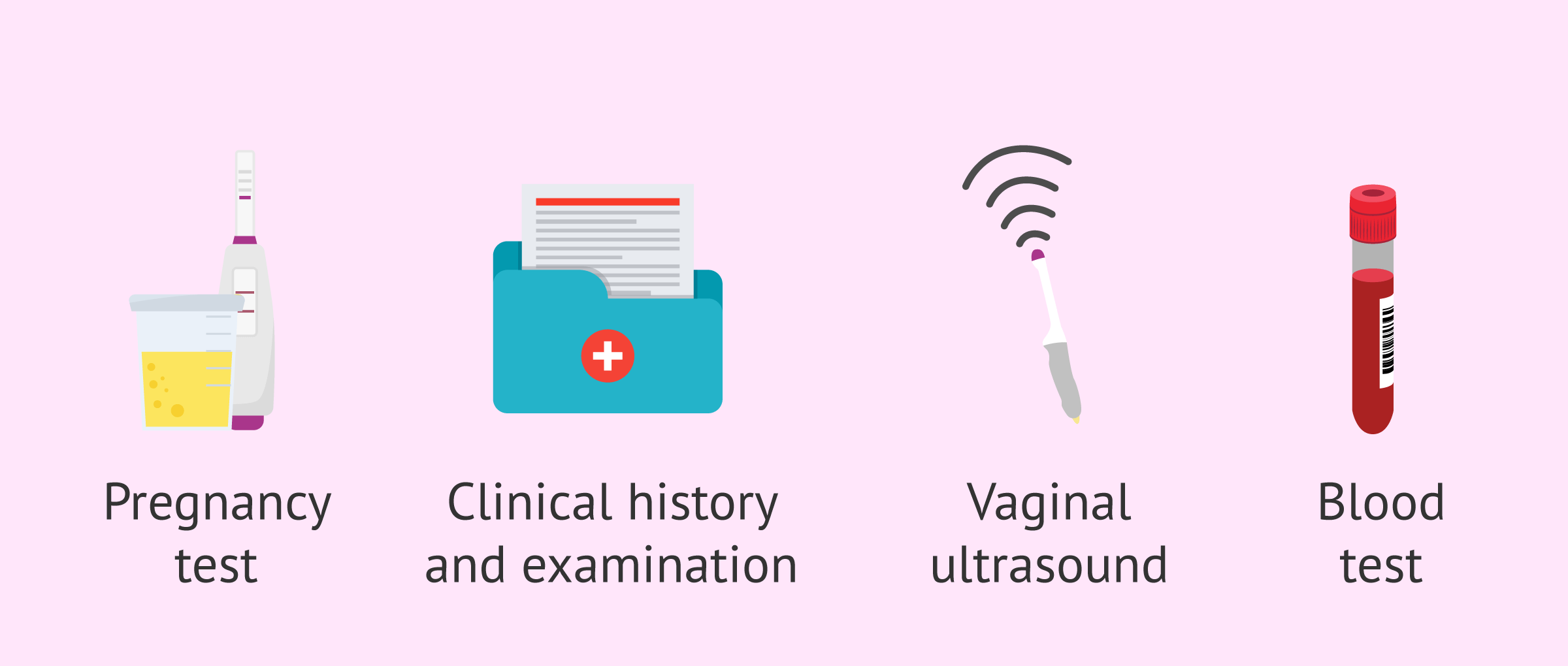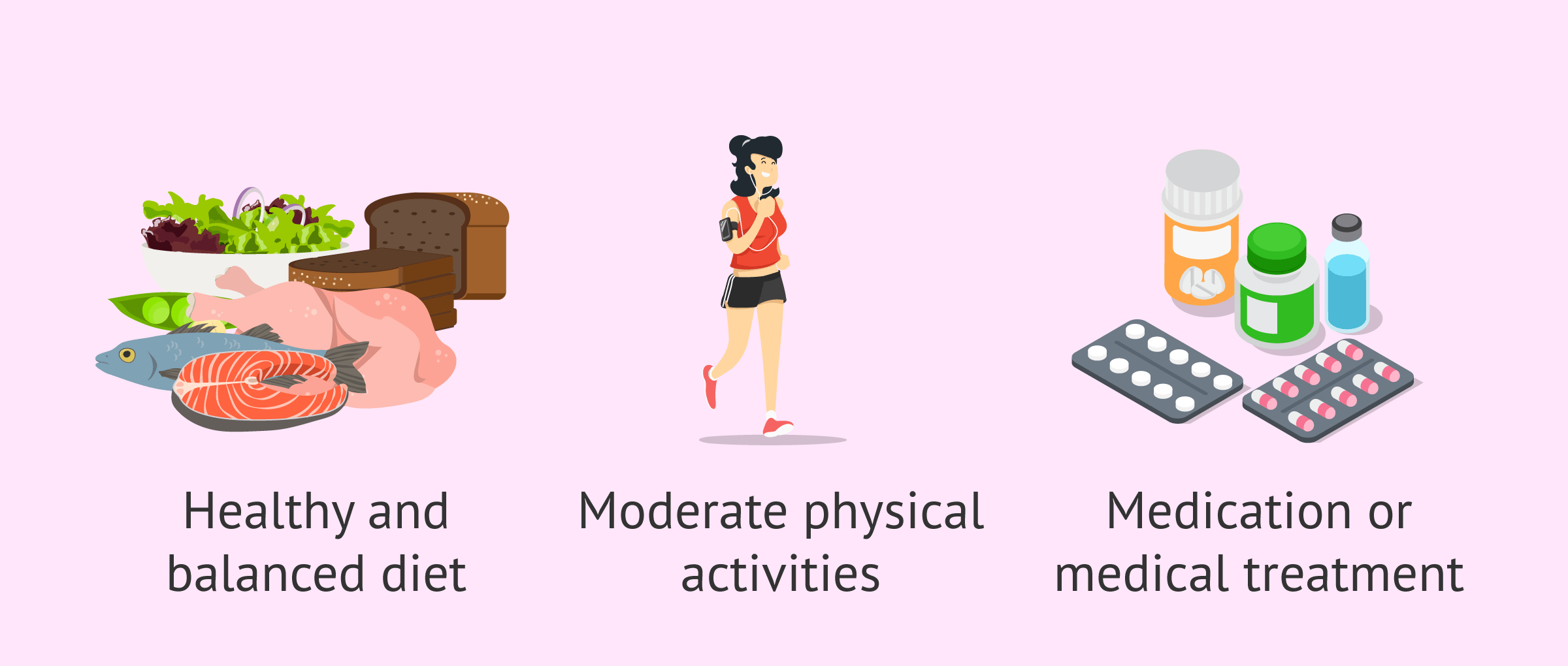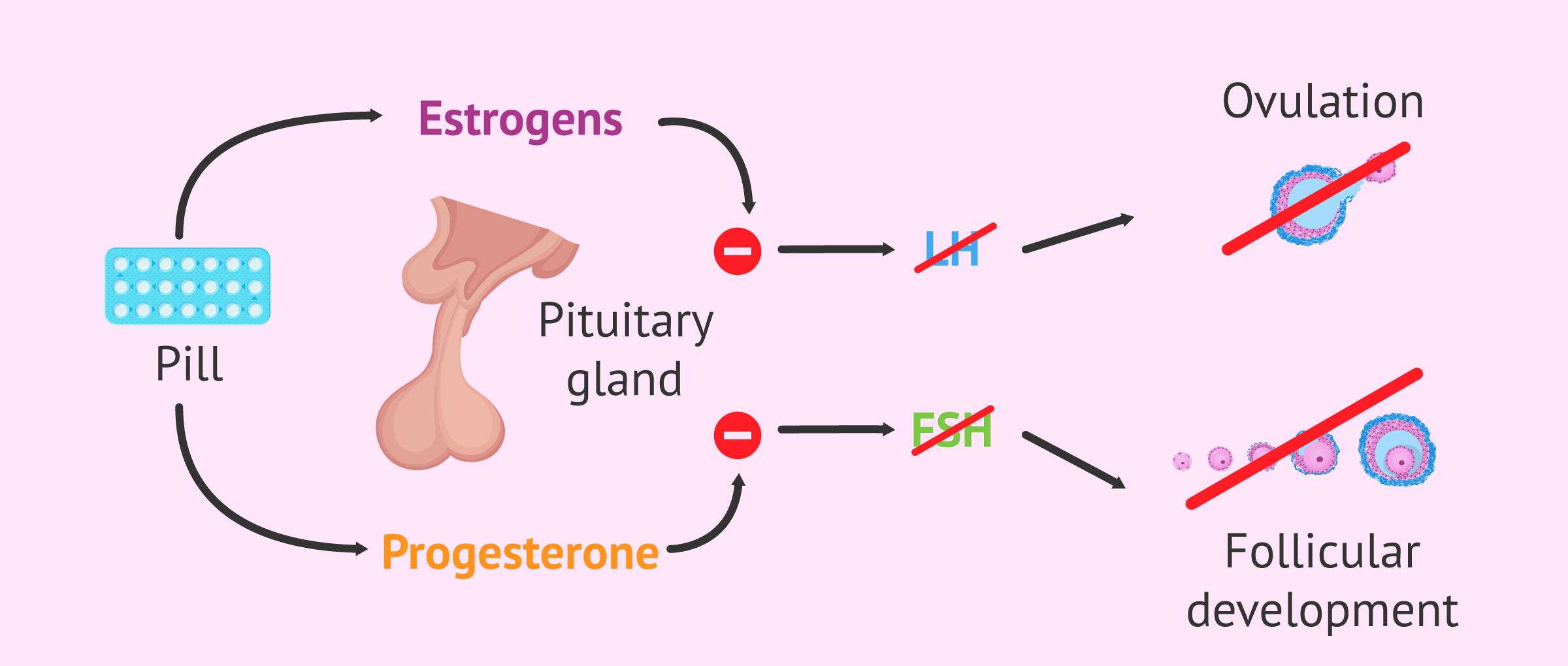Menstruation is caused by a series of signals produced by our body through hormonal connections between the brain and the ovaries, which we call the hypothalamus-pituitary-ovary axis.
On numerous occasions, women of reproductive age visit gynecology offices due to the absence or abnormal cessation of menstrual bleeding. This is known as amenorrhea and can be caused by different factors.
Provided below is an index with the 10 points we are going to expand on in this article.
- 1.
- 2.
- 2.1.
- 3.
- 4.
- 5.
- 6.
- 7.
- 7.1.
- 7.2.
- 7.3.
- 7.4.
- 7.5.
- 7.6.
- 7.7.
- 8.
- 9.
- 10.
What is amenorrhea?
Amenorrhea is defined as the absence of menstruation or menstrual periods. This alteration may be due to an occasional, intermittent problem or to permanent factors in women.
When a woman reaches the stage of puberty, menstruation begins, which occurs once a month until the age of 45-50 years. At about this age, menopause begins and menstrual bleeding stops. However, this physiological cessation of menstruation with the onset of the menopausal stage is not considered amenorrhea.
In this way, the absence of menstruation can be classified into:
- Primary amenorrhea
- absence of menstruation in a 15-16 year-old girl with normal growth and development. This type of amenorrhea has an incidence of 0.1% and is manifested by delayed menarche, first menstrual period.
- Secondary amenorrhea
- a woman has menstruated throughout her life up to a certain point in time. Specifically, the patient must have 3 cycles or 6 months without menstruation to be diagnosed with amenorrhea. Its incidence is 0.7% and is usually due to a lack of hormone production.
On the other hand, in those women who wish to become pregnant, the frustration, anxiety, and stress caused when pregnancy does not occur, can lead to amenorrhea. In addition, if the absence of menstruation is prolonged over time, pregnancy will not occur and this, in turn, increases the degree of anxiety, thus creating a negative vicious circle.
Assisted procreation, as any other medical treatment, requires that you rely on the professionalism of the doctors and staff of the clinic you choose. Obviously, each clinic is different. Get now your Fertility Report, which will select several clinics for you out of the pool of clinics that meet our strict quality criteria. Moreover, it will offer you a comparison between the fees and conditions each clinic offers in order for you to make a well informed choice.
Causes of absence of menstruation
The possible causes of the absence of menstruation in women are multiple and may be related to disorders in the brain, ovaries, uterus, and vagina or even genetic factors.
In the case of primary amenorrhea, genetic disorders such as Turner syndrome, Kallmann syndrome, or congenital adrenal hyperplasia can cause the absence of menstruation in women. In addition, congenital defects of the female reproductive organs also cause this type of amenorrhea, as they block the outflow of menstrual blood.
On the other hand, secondary amenorrhea may be due to:
- Pregnancy
- Breastfeeding
- Dysfunction of the hypothalamus.
- Polycystic ovary syndrome (PCOS).
- Early ovarian failure.
Although these are the most frequent causes of amenorrhea, if there is some hormonal imbalance in the body, the absence of menstruation may also occur. For example, when prolactin levels are above normal (hyperprolactinemia), it may be the case that menstrual letdown stops. This is the reason why during lactation (high prolactin level) many women do not have their periods.
Risk Factors
There are factors that increase a woman's likelihood of amenorrhea. Some of them are listed below:
- Family history of other women who have suffered amenorrhea.
- Eating disorders, such as anorexia or bulimia. If you have a Body Mass Index lower than 19, this pathology may occur.
- High-performancesports activity.
It should be noted that stress is another factor that causes the absence of menstruation in women, including here not only work or school situations but also those of any psychiatric illness that can generate a lot of stress such as anxiety or depression.
What are the symptoms of amenorrhea?
The absence of menstruation is the main symptom of amenorrhea in a woman. In addition, the lack of estrogen release by the ovary can lead to the appearance of the following clinical manifestations:
- Alterations of the emotional state.
- Sleep disturbances.
- Decreased libido.
- Vaginal dryness and consequently painful sexual intercourse.
- Hair loss.
- Headache.
It is important to know that hormonal imbalance in the case of amenorrhea causes anovulation and, therefore, the appearance of secondary sterility.
How is amenorrhea diagnosed?
As we have already mentioned, the absence of menstruation for at least three months is necessary to diagnose this condition. At that moment, the woman should see a specialist and he/she will rule out pregnancy, however unlikely it may be.
Once gestation has been ruled out, the general protocol is to take the patient's medical history in order to provide the gynecologist with a background to assess whether there is any disorder that could induce gestation. This will be followed by a physical examination, which will serve both to assess the genital tract and to check the body mass index (BMI).
The specialist will also perform a vaginal/abdominal ultrasound to complement the physical examination and a hormonal analysis to assess estrogen deficiency. In addition to the estrogen profile, other hormones such as FSH, LH, prolactin, etc. will be assessed.
As complementary techniques for the diagnosis of amenorrhea, a CT scan of the head, endometrial biopsy, genetic testing, or magnetic resonance imaging may be requested.
Treatment for amenorrhea
There is no need to worry excessively about this since this pathology has a solution and it is convenient to solve it in order to avoid negative effects in the future.
Therefore, it is of vital importance to assess the origin of amenorrhea and seek solutions based on it, such as recovering a healthy and balanced life, improving eating habits, and moderating the practice of physical exercise.
Many times the correction of this type of habit is not achieved in the blink of an eye but will have to go slowly and slowly, and therefore the gynecologist may prescribe additional medication to remedy the lack of estrogen occurred.
The cure of this pathology occurs menstruation returns to be present in women on a regular basis. From that moment on, the patient's life will be normal and she can even become pregnant since her hormone levels have been restored again and she will have regained fertility.
Amenorrhea due to hormonal contraceptive methods
Hormonal contraceptive methods cause a blockage of ovulation by acting on the menstrual cycle regulation system, the hypothalamus-pituitary-ovary axis. Thus, the hormones naturally released by the ovary are administered by the contraceptive (oral, injected, or implanted in the arm). Most hormonal contraceptives contain high amounts of estrogen and progesterone.
This leads to the brain (hypothalamus and pituitary) reducing or blocking the release of FSH and LH hormones and thus preventing ovulation. This special hormonal situation leads to very light menstruations, of short duration and little bleeding and even in some cases to total amenorrhea.
When hormones are discontinued, the body may require some time to re-establish the hormonal imbalance and this may lead to a temporary amenorrhea period of 1 to 4 months after stopping contraceptive methods. This is common; however, if the amenorrhea period in these cases is prolonged, it is recommended to visit the specialist to bring on the first menstruation and achieve the usual hormonal regulation.
FAQs from users
Is natural pregnancy with amenorrhea possible?
In principle the answer is no. Amenorrhea (absence of menstruation for 6 months) is the result of a lack of ovulation, a process by which the egg is just prepared biologically to be fertilized and is released from the ovary through a process of follicular rupture.
If the egg does not undergo the process of ovulation, it will not leave the ovary and therefore cannot be fertilized, since the fertilization of the egg by the sperm occurs at the level of the Fallopian tube.
The release of the egg from the ovary produces cellular changes at this level that will cause a series of hormones to be secreted, which will lead, 14 days later, to menstruation. Therefore, if there is no ovulation, there will be no pregnancy and no menstruation.

Even so, we must be very careful with this statement, because when amenorrhea is secondary to a reversible noxa, this state of anovulation can be resolved at any time. In these cases, the woman will not be aware that she has ovulated until 14 days later when her menstruation startes. So a patient with amenorrhea who does not want to become pregnant should take the necessary precautions to avoid it since we do not know when this state can be reversed.
If I am not menstruating, am I not ovulating?
For menstruation to occur, progesterone secretion is necessary, which occurs in the second phase of the cycle (secretory phase), after ovulation.
Menstruation is nothing more than endometrial shedding (the inner layer that lines the uterus) when there is a hormonal drop in estrogen and progesterone at the end of the second phase of the cycle (secretory phase). Therefore, it is very likely that if you are not menstruating you are not ovulating.
However, vaginal bleeding is not always synonymous with ovulation. There are vaginal bleeding that are not properly menstruation, and that can confuse us. This is the case of cervical bleeding, polyps... This type of bleeding is usually irregular.
However, it is important to know that women with regular periods (every 28 days on average) ovulate in 95% of cases.
What is the prognosis for amenorrhea?
The prognosis of amenorrhea will depend on the type and cause of the absence of menstruation. In the case that the amenorrhea is due to a cause and has a cure, the prognosis is favorable.
However, if the absence of menstruation is caused by cancer or any other serious condition, the prognosis will be complicated.
Is amenorrhea genetic?
Primary amenorrhea, that is, the absence of menstruation in women when they reach puberty, is often related to genetic disorders that cause malformations of the female sex organs.
An additional risk factor is a family history of amenorrhea, so it is important to visit the OB/GYN on a regular basis.
Why does breastfeeding cause amenorrhea?
The main reason for the absence of menstruation during lactation is related to suction and blocking of ovarian function.
When the baby suckles, the function of the hypothalamus-pituitary axis is inhibited and therefore no hormones are produced that control ovulation. In this way, the maturation of the egg in the ovary does not take place, nor is progesterone generated. The result of these effects is the absence of menstruation in the woman.

In addition, the levels of the hormone prolactin in lactation are high, which also leads to a maladjustment in the hypothalamus-pituitary axis and causes amenorrhea.
Can obesity cause amenorrhea?
Obesity or overweight, as well as a low body mass index (BMI), can have consequences on a woman's menstrual cycles. When the BMI is higher than 25, it is possible that a large amount of estrogens may be produced leading to alteration of the menstrual cycle, anovulation (absence of ovulation) and, therefore, absence of menstruation.
Are amenorrhea and dysmenorrhea the same thing?
No. Amenorrhea and dysmenorrhea are different menstrual disorders.
In the case of amenorrhea, it is the absence of menstruation for at least three months. Dysmenorrhea, on the other hand, is a term used to refer to the intense pain that some women have in the pelvic and abdominal area before or during menstruation.
Recommended reading
One of the causes of the absence of menstruation is the presence of high levels of prolactin in the blood. If you want to learn more about this disorder, you can visit the following article: What is hyperprolactinemia - Causes, symptoms, and treatment.
We have mentioned that amenorrhea can cause sterility in women. However, this is not the only reason a woman may have difficulty achieving pregnancy. If you wish to continue reading about this topic, we recommend you to access the following link: What causes female infertility - Symptoms and treatments.
We make a great effort to provide you with the highest quality information.
🙏 Please share this article if you liked it. 💜💜 You help us continue!
References
A Lania, L Gianotti, I Gagliardi, M Bondanelli, W Vena, M R Ambrosio. Functional hypothalamic and drug-induced amenorrhea: an overview. J Endocrinol Invest. 2019 Sep;42(9):1001-1010. doi: 10.1007/s40618-019-01013-w. Epub 2019 Feb 11 (See)
David A Klein, Scott L Paradise, Rachel M Reeder. Amenorrhea: A Systematic Approach to Diagnosis and Management. Am Fam Physician. 2019 Jul 1;100(1):39-48 (See)
Diane Bloomfield. Secondary amenorrhea. Pediatr Rev. 2006 Mar;27(3):113-4. doi: 10.1542/pir.27-3-113.
Diana L Heiman. Amenorrhea. Prim Care. 2009 Mar;36(1):1-17, vii. doi: 10.1016/j.pop.2008.10.005 (See)
Kate Berz, Teri McCambridge. Amenorrhea in the Female Athlete: What to Do and When to Worry. Pediatr Ann. 2016 Mar;45(3):e97-e102. doi: 10.3928/00904481-20160210-03 (See)
Nobuhiko Suganuma, Madoka Furuhashi, Tomoko Ando. Primary amenorrhea. Nihon Rinsho. 2006 Jun 28;Suppl 2:379-83.
Tarannum Master-Hunter, Diana L Heiman. Amenorrhea: evaluation and treatment. Am Fam Physician. 2006 Apr 15;73(8):1374-82 (See)
FAQs from users: 'Is natural pregnancy with amenorrhea possible?', 'If I am not menstruating, am I not ovulating?', 'What is the prognosis for amenorrhea?', 'Is amenorrhea genetic?', 'Why does breastfeeding cause amenorrhea?', 'Can obesity cause amenorrhea?' and 'Are amenorrhea and dysmenorrhea the same thing?'.
Authors and contributors



More information about Cristina Algarra Goosman









What happens to amenorrhea when left untreated? I have been without my period for 6 months and I have to admit, I enjoy it, lol.
Hello Noah,
it is not advisable to leave amenorrhea untreated since you may suffer from long-term consequences such as infertility, heart diseases or osteoporosis since amenorrhea is caused by low estrogen levels which in turn lead to weak bones.
Hope this answers your question.
Best regards
I passed several months without bleeding because of anemia. I started taking iron supplements and in a short time it came back to me on a regular basis. Once I was also three months without bleeding I had a lot going on in my life (new job, divorce, money, etc.). Sometimes it doesn’t take much for a menstrual cycle to go nuts.